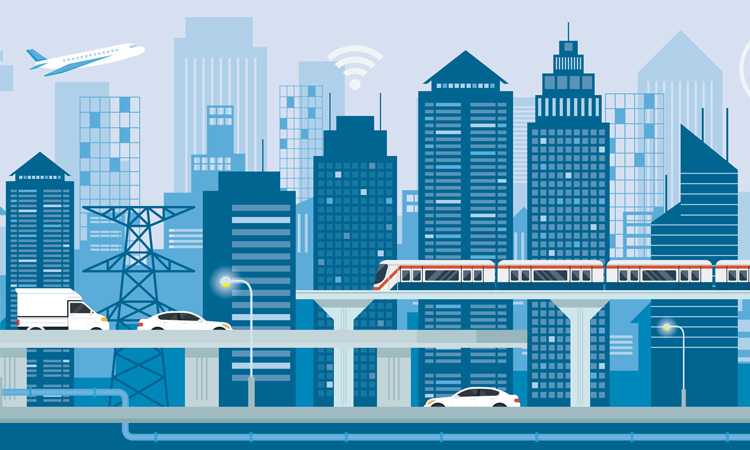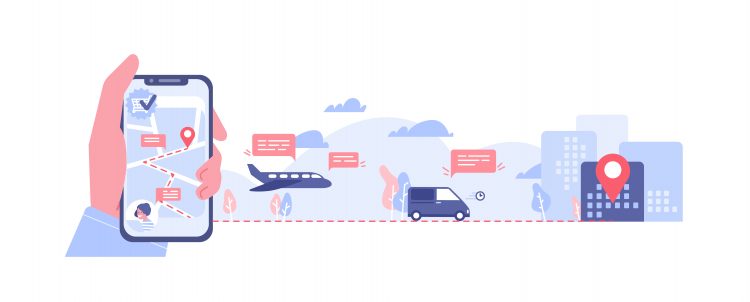Top seven urban mobility trends to look out for in 2020
- Like
- Digg
- Del
- Tumblr
- VKontakte
- Buffer
- Love This
- Odnoklassniki
- Meneame
- Blogger
- Amazon
- Yahoo Mail
- Gmail
- AOL
- Newsvine
- HackerNews
- Evernote
- MySpace
- Mail.ru
- Viadeo
- Line
- Comments
- Yummly
- SMS
- Viber
- Telegram
- Subscribe
- Skype
- Facebook Messenger
- Kakao
- LiveJournal
- Yammer
- Edgar
- Fintel
- Mix
- Instapaper
- Copy Link
Posted: 5 February 2020 | Carol Schweiger - Schweiger Consulting | 1 comment
Carol Schweiger reflects on 2019 and makes her annual predictions of the technology and mobility trends that look to shape urban transport in the next 12 months.


When asked to make predictions about what we might see in terms of technology-enabled mobility in 2020, I realised that it would be challenging to describe just five trends given how much changed in this area in 2019 and what is likely to happen 2020. There are so many quick-moving parts in the passenger transportation environment that it is challenging to relegate my predictions to only five. So this year, I have expanded my predictions to seven.
1. Focusing on travel time goals


My first prediction is that we will see more travel time goals in major urban areas as a result of transportation planning efforts. Meeting these goals will be facilitated by the use of technology-enabled mobility services. One example of this is contained in Singapore’s Land Transport Master Plan for 20401:
- All journeys to the nearest neighbourhood centre using public, active and shared modes of transport are completed in less than 20 minutes
- Nine in 10 peak-period journeys using public, active and shared modes of transport are completed in less than 45 minutes
- Public, active and shared modes of transport are the preferred ways to travel, accounting for nine in ten of all peak-period journeys.
Some of the technologies and strategies that will facilitate these goals include transit signal priority, automated vehicles (AVs), mobility on demand (MOD), physically accessible and inclusive transport services, and more clean and electric vehicles.
2. MaaS is multimodal


The second prediction is that traffic management will be recognised as a significant portion of Mobility-as-a-Service (MaaS). While in 2019, there were numerous discussions of how Traffic Management 2.0 (TM 2.0) and Transportation Systems Management and Operations (TSMO) should be integrated into MaaS, many of the MaaS pilots did not include data or information that would be generated by traffic operations and be very valuable to travelers using MaaS platforms.
In 2020, there will be MaaS deployments incorporating traffic data. Further, there will be pilot MaaS deployments that incorporate road user charging (RUC) or toll payment. There is no reason why technology that is used to facilitate toll payment cannot be used to pay for other mobility services and vice versa. MaaS pay as you go or subscriptions could cover RUC as well as public transport tickets, for example.
3. Public autonomous transport


The third prediction is that AVs will actually be put into public transport service. There have been numerous pilots of AV shuttles around the world that provide first mile/last mile services, but very few that are actually providing fixed-route public transport service. One example in the U.S. is “Little Roady” in Providence, Rhode Island, which as of 21 January 2020, has provided more than 33,000 trips since its beginning in May 2019 and is averaging 134 trips per day on its 5.3-mile route in the Woonasquatucket River Corridor of Providence, with 12 stops between Providence Station and Olneyville Square.2
Another example is the Future Automated Bus Urban Level Operation Systems (FABULOS) project in the European Union, which is “a proof-of-concept for the management of autonomous fleets as part of the public transportation provision. Some parts of the driving automation need to reach a more mature stage in their development in order to be employable in normal urban settings, such as open roads. In other words, a demonstration of the economic, technical, societal and legal maturity of the solution needs to be carried out in a real-life setting. The six partner cities are embracing this challenge by collectively procuring R&D for the prototyping and testing of smart systems that are capable of operating a fleet of self-driving minibuses in urban environments.”3
4. Utilising artificial intelligence


The fourth prediction is that we will see more use of artificial intelligence (AI) and deep learning in public transport in 2020. In a study conducted by the International Association of Public Transport (UITP), AI is already being used in six public transport areas:
- Customer experience improvement through digital assistants
- Optimisation of operational efficiency through predictive analysis of mobility demand
- Autonomous dispatching and operations to better meet the increasing demand and dynamic environmental changes
- Improvement in efficiencies in traffic monitoring
- Effective preventive maintenance operations
- Preventive safety and security management using AI powered video analytics.4
While a culture of innovation is one of the key elements of public transport agencies preparing for and implementing AI, and many agencies are just beginning to build that culture, 2020 will see more use of AI particularly in customer service.
An example of AI in public transport is Transport for London’s (TfL) TravelBot which started on Facebook at the end of 2017 to “help you check the status of your Tube, rail or bus route. [It] can also help with common questions. [It is] free and work[s] with TfL’s latest travel data. You can ask [it] for information using everyday language. You don’t need to be a technical person to understand how [it] work[s]. For example, you can ask [it] something as simple as ‘Hi, how’s the Jubilee line today?’”5
5. Perfecting the ‘complete’ trip


The fifth prediction is a continuation of one I made for 2019 – that there would be a focus on the “Complete Trip.” Indeed, that happened at least in part at the US Department of Transportation. In late 2019, USDOT Secretary Elaine Chao announced “the first-ever Complete Trip Deployment Program. It’s a planned $40 million DOT commitment, over four years, to help communities develop comprehensive, seamless and efficient transportation solutions to increase mobility access. The goal is to enable people to travel independently from one point to another, regardless of the number of connections, transfers or modes of transportation. The programme focuses on holistic approaches that create more choices and better access for older adults, people with disabilities and underserved communities in rural and small urban areas.”6 This programme’s solicitation, now called “Complete Trip – ITS4US Deployment Program7,” is expected to be announced in early 2020. Thus, this focus on the complete trip will continue in 2020.
6. Kerb-side management
The sixth prediction is also somewhat of an extension of one of last year’s predictions – kerb management. In 2020, I expect that we will see more pilot programmes that not only digitise the kerb, but institute a reservation system or regulate the kerb to identify which types of services can utilise specific kerb space at specific days of the week and times of the day. A good example of this is the demonstration conducted in Washington, D.C. in 2019 as well as the kerb-side management pilot at the Tom Bradley International Terminal at the Los Angeles International Airport and in Columbus, Ohio. Further, in 2020, we will understand better the impact of kerb management on micromobility services (e.g. scooter-sharing).
7. An open system


The seventh prediction is that in 2020, we will continue to move toward open platforms and data to drive technology-enabled mobility services. As we have seen in the last several years, some “walled-garden” pre-MaaS applications have been deployed by ride sourcing and other private mobility companies. Unfortunately, these apps do not provide travellers with all available mobility services, but only those that they control or those for which they have agreements in-place. This walled-garden approach does not favour the traveller, and highlights the importance of open platforms as envisioned by various organisations, including AARP and the Open Mobility Foundation (OMF).
Further, from an open data perspective, mobility marketplaces, such as MaaS, cannot deliver travellers’ the critical information they need while making a trip if the underlying data describing how the mobility services are operating in real-time is not open. While this data must be open to facilitate real-time mobility decisions, the data being collected about individual trips (e.g., locations of trip origin and destination) to better understand travel behaviour and provide personalisation must remain secure and anonymised.
Finally, a related data issue that we will see addressed in 2020 is data ethics, which is needed primarily to ensure that there is equality and morality in mobility services. As was discussed at the 2019 Intelligent Transport Conference in London, data is not impartial. Someone has written analysis software or is using the data in such a way that can create biases without it being known.
References
1. https://www.lta.gov.sg/content/ltagov/en/who_we_are/our_work/land…
2. Information courtesy of Christos S. Xenophontos, Assistant Director, Rhode Island Department of Transportation
3. https://fabulos.eu/fabulos-brings-self-driving-buses-to-the-streets-of-europe/
4. Gayang HO, Clémence MORLET, LOOI Teik Soon, Dr. Evan GWEE and Alok J AIN, “Artificial Intelligence in Mass Public Transport,” Paper Number AP-CP2236, Proceedings of the 2019 ITS World Congress, Singapore, 21-25 October 2019.
5. https://www.facebook.com/tfltravelbot/
6. “Access and Mobility for All Summit,” Remarks Prepared for Delivery by U.S. Secretary of Transportation Elaine L. Chao Disability Access and Mobility for All Summit, Washington, DC, Tuesday, October 29, 2019, https://www.transportation.gov/briefing-room/access-and-mobility-all-summit









Hallelujah! A focus on making and meeting travel time goals for all (not just for suburban rail commuters). I sure hope Carol is right.